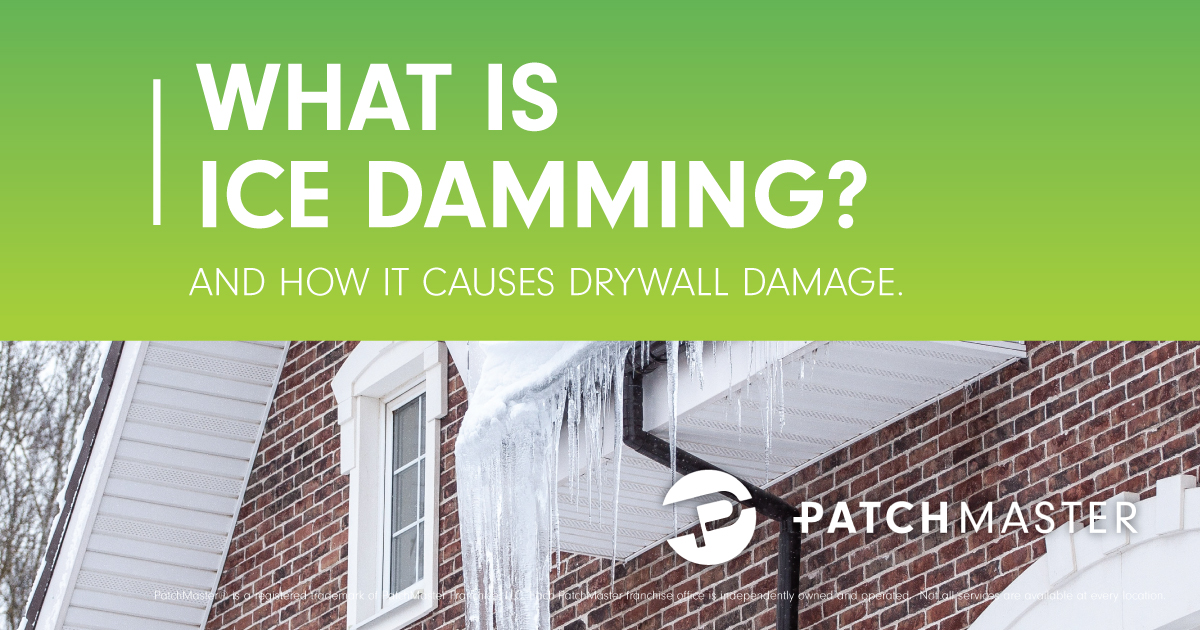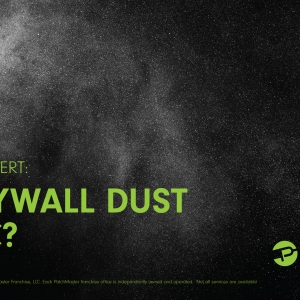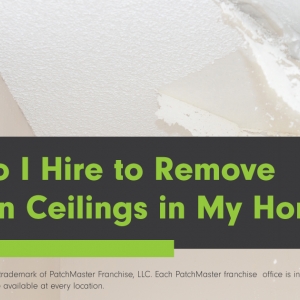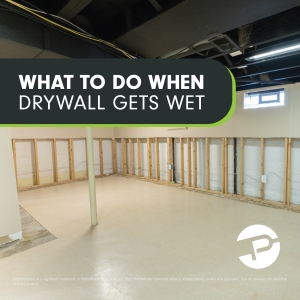Winter has arrived for many homeowners across the United States, and while the icicles that form on the sides of houses might look beautiful, they pose a far more serious threat than falling on your head. In this article, we will cover ice dams, how to remove them, issues that can arise if they are not properly taken care of, and some tips on ice dam prevention.
What Is an Ice Dam?
In parts of the country with normal to above normal snowfall, ice dams are a common problem. You probably have been dealing with ice dams for some time if you own a home with poor roof ventilation and a warm attic in a geography that gets significant snowfall. If left untreated, ice dams can lead to serious issues with your gutters, roof, insulation, drywall, paint, and home structure. When left untreated, ice damming can also lead to mold infestation. As a result, you should remove any existing ice dams and prevent future ice accumulation in the future.
Ice damming typically occurs when an attic's warmth causes the roof surface to rise above freezing after a heavy snowfall. This heavy snow acts like an insulator, trapping in heat and causing the snow that is closest to the roof to melt and flow down the roof.
What Causes Ice Dams to Form?
Under specific snowy or freezing conditions, ice dams may form. When you have significant snowfall, it will accumulate on your roof. The heat from inside your home and attic can then cause the lowermost layer of snow to melt.
As water flows down the roof, it immediately freezes again as soon as it goes beyond the warm part of the ceiling - which is usually the area closest to the gutters and beyond the house's walls. Over time, as the water melts and flows down, it eventually reaches the warmer part of the roof behind the dam. If not removed, water will find its way through the shingles and into your home.
What Damage Can an Ice Dam Cause?
As the heat from your home melts the snow on your roof, the water becomes trapped under the snow that did not melt. A large quantity of water can then accumulate, seep, and leak into your home, causing water, paint, and drywall damage. If left untreated, or if it is a spot where you may not see it immediately mold and mildew growth could begin in the home. The exterior of your home may be damaged, including the roof, gutters, plants, walls, and exterior paint. Excess water from ice dams can also lead to lifted or damaged shingles, which can cause a whole host of other problems.
Not only can ice dams and accompanying icicles damaged window sills, chimneys, gutters, and shingles, they can also severely injure people if they fall on them.
Ice Dam Removal Tips
Maybe you're wondering why we didn't suggest simply removing the dams when they form with a hammer, chisel, ax, etc. The reason for this is that you should never do this under any circumstances.
You can cause serious damage to your home if you try to remove the ice yourself with a tool, not to mention, t’s also extremely dangerous as ice can fall on you, and cause serious injury. Non-professionals should not attempt this type of work.
Clear Roof and Gutters of Snow
This may seem like a no-brainer, but it does take some planning and dedication. Clearing your roof and gutters of snow can prevent ice dam formation if you have a roof prone to ice dam formation. When there is a snowstorm or snowfall, try to remove the snow from the roof as quickly as possible. This will prevent ice dams from forming from melting snow.
A note of caution - If you are not careful during the snow removal process, you could cause damage to your roof or gutters. In addition, you could accidentally rip the shingles off your roof! Of course, there is always a risk of personal injury, should you fall or be hit by falling snow and/or ice.
The methods we mentioned above are temporary, quick fixes. The following are long-term fixes that will prevent ice dam formation in years to come, not just prevent a current one from getting worse.
Prevent Ice Damming with Adequate Roof Ventilation and Insulation
If you improve the ventilation and insulation on your roof and in your house in general, your roof will be more evenly heated. By doing so, you prevent unequal heating from melting snow on the roof, which stops ice dams from forming.
The use of certain roof repair methods can reduce the risk of snow melting under the roof because cold air can be ventilated under the roof. Along with other natural roof ventilation methods, attic ventilation is another way to improve ventilation.
In addition, you can insulate your roof and/or attic. As a result, the warmth from the home, stays inside, reducing heat loss to the exterior. By preventing the heat from escaping your home, you prevent snow from melting on the roof, ultimately, avoiding ice dams.
Seal, Caulk, and Weatherstrip
Sealing, caulking, and weatherstripping serve will help insulate the heat in your home, preventing heat from reaching the snow on the roof, melting and forming an ice dam. These steps should be used on air ducts, vents, skylights, chimneys, HVAC areas, and any areas with electrical wiring, and lights.
How Ice Dams Damage Drywall
If your home is prone to ice dam formation, you may find yourself needing a professional for drywall repair. Once inside, water can spread through wet drywall as if it were a sponge. As a result, the walls will bubble up sometimes forming small puddles on surfaces below. Mold growth and structural damage can result from drywall water damage if left untreated. Here are a few things to look for:
- Checking Drywall for Water Damage
- A damp area in the wall that was not here before
- Bubbling and gurgling of the wall as if it is about to collapse
- Numerous surface-level bubbles
- Discoloration or signs of mold/fungus growth
When it comes to protecting your home, having a trusted professional on your side is a must. If you experience drywall damage from ice damming, contact PatchMaster and let our team of expert technicians make you whole again. Give us a call at 1-844-PATCH-MAN (US) or 1-833-WE-PATCH (Canada).






